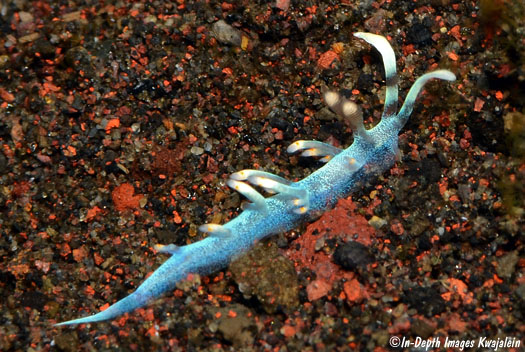
One of the most common species at Tulamben was Samla bicolor. We typically found it early or late in the dive as we passed over the shallow flat between the shore and the slope, where the nudibranchs were generally exposed on rocks or dark sand. But it is possible that all these may not be S. bicolor. You would think that such a common and widespread species would be easy to identify, but the specimens we saw varied a fair bit. Some had short and others long cerata. Some had flattened oral tentacles, others round. Some had translucent bodies while others were speckled or crusted with opaque white (or even light cyan). In some, the banding on the rhinophores approached that of Samla riwo but had cerata much like S. bicolor.

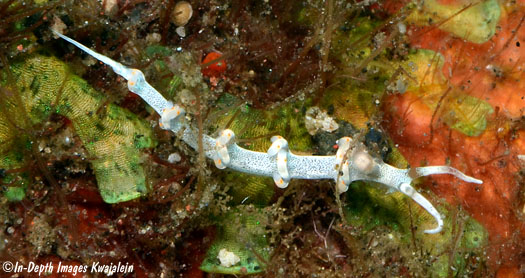
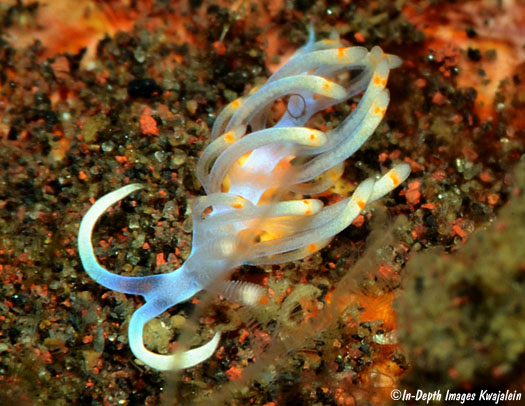
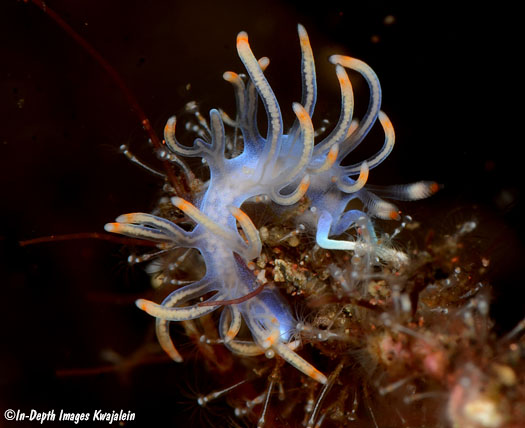
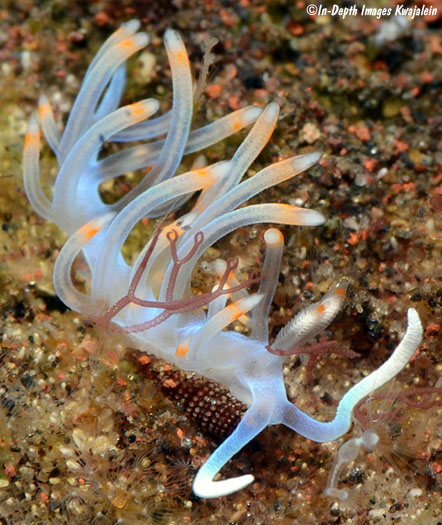
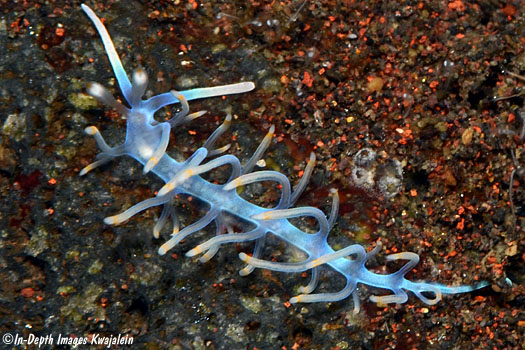
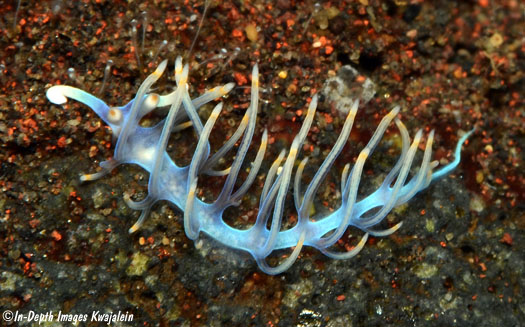
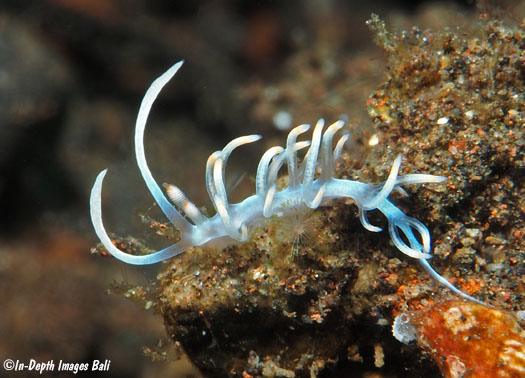
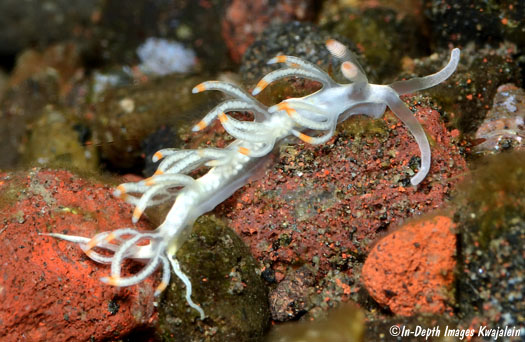
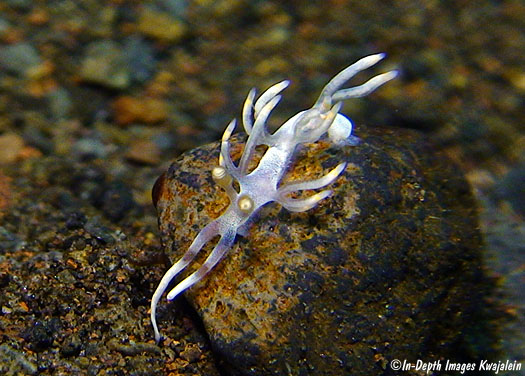
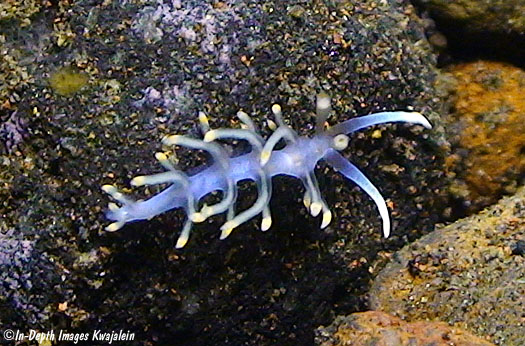
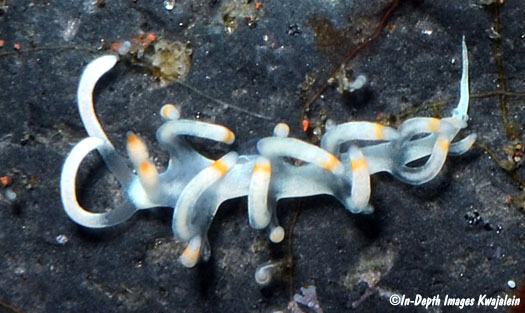
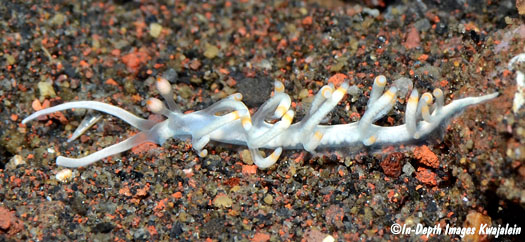
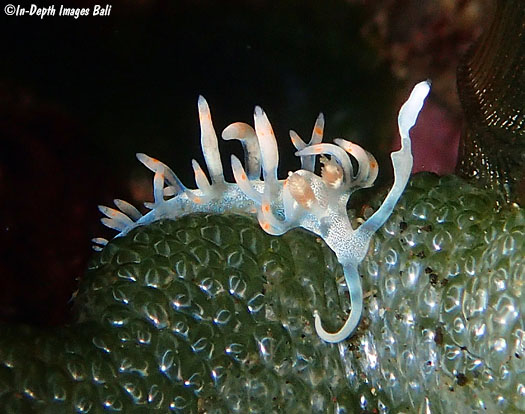
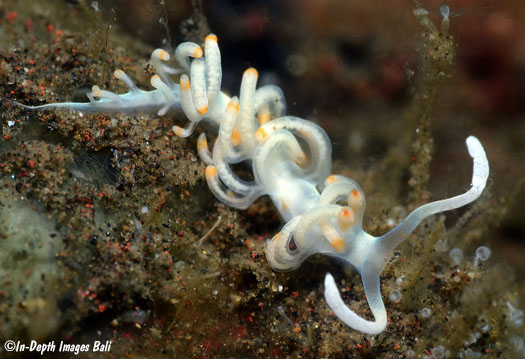
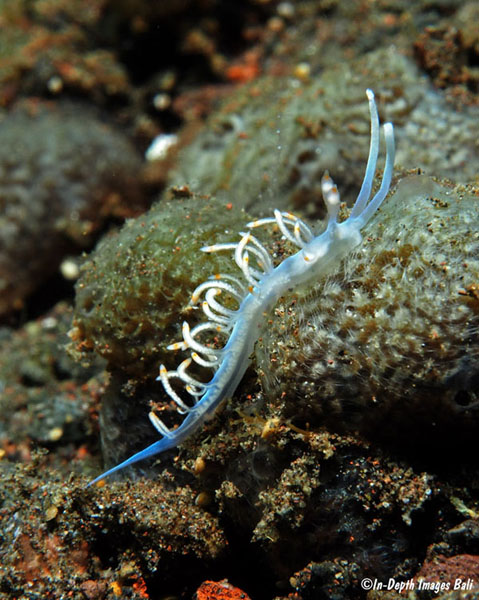
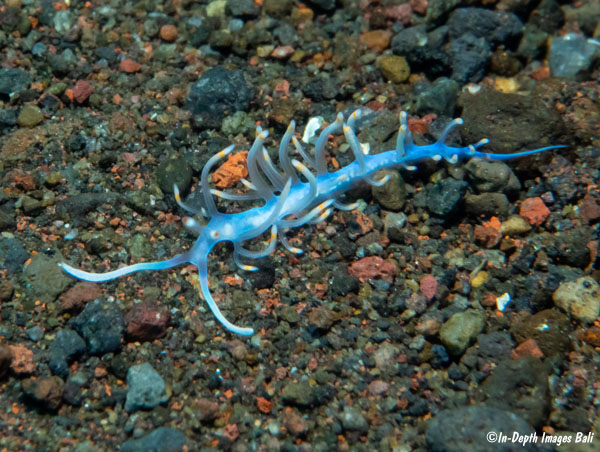
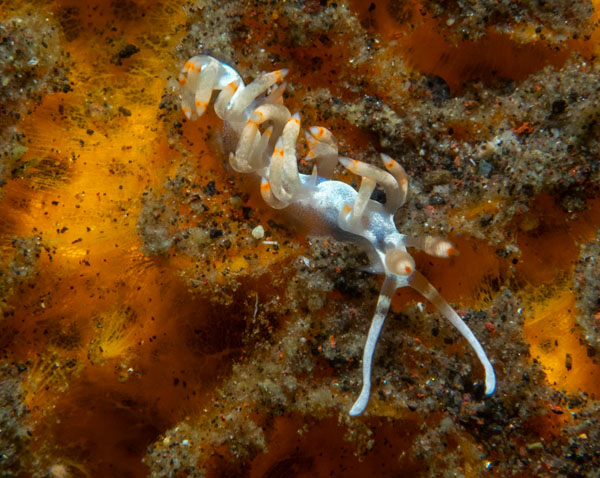
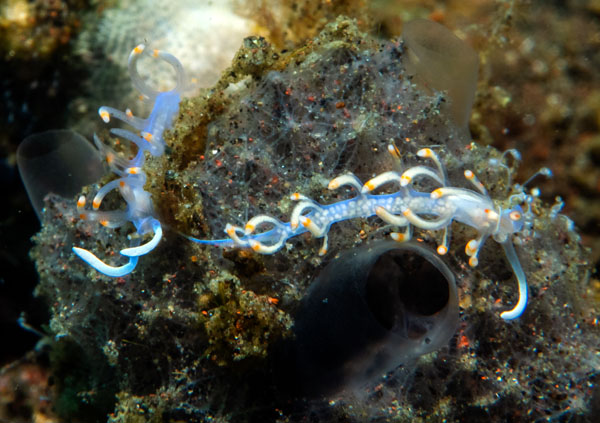
This cluster of four individuals had an egg mass visible just to the right of the rightmost pair.
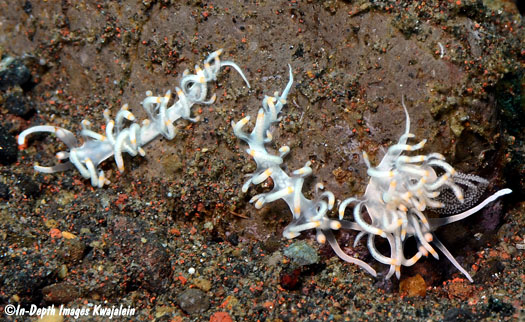
More egg masses under a rock in about 1m of water.
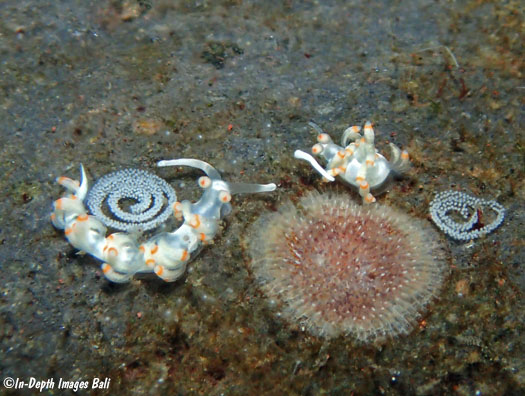
Created 26 December 2012
Updated 22 June 2025